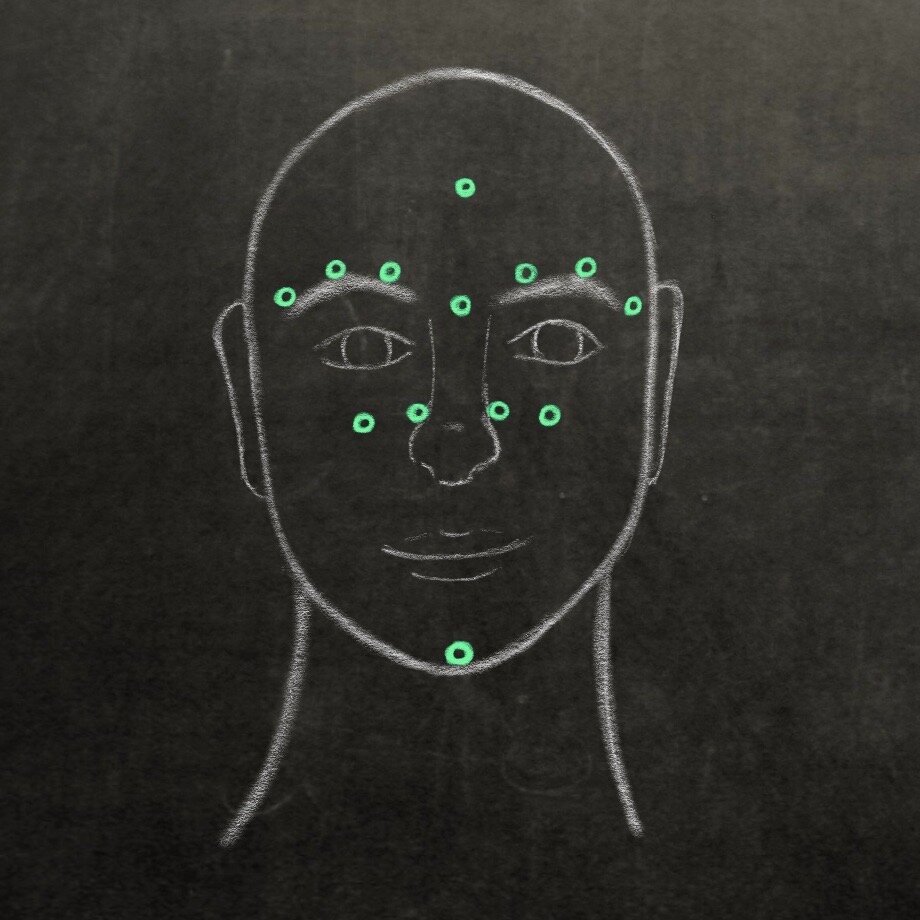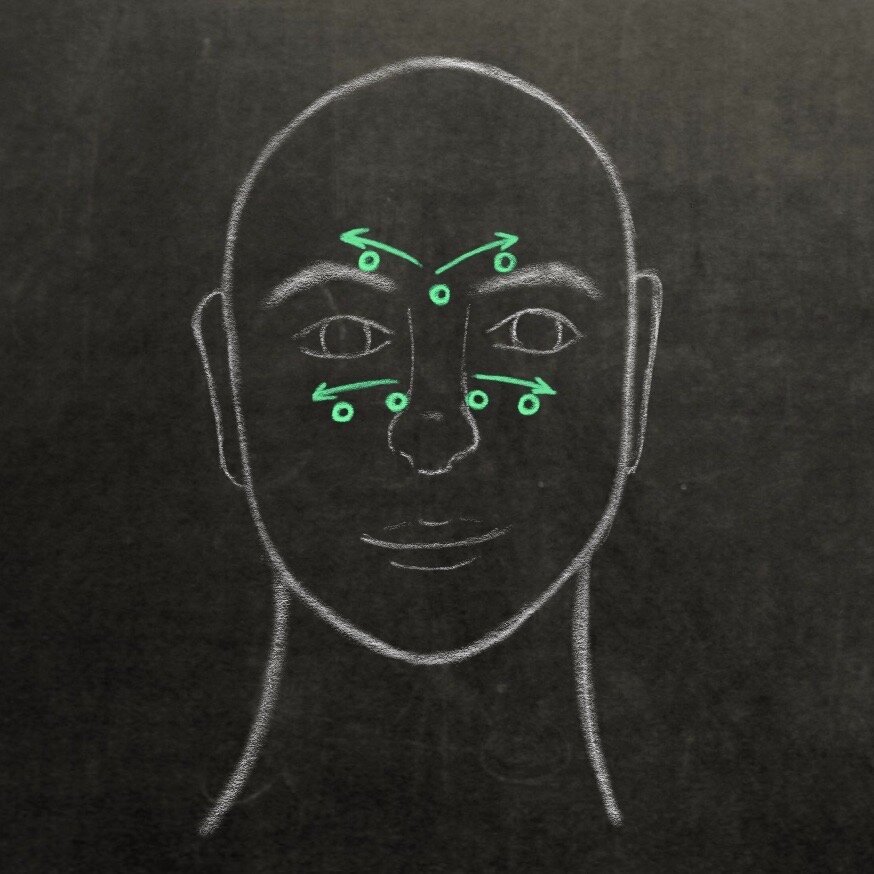The 4 Most Common Types of Headaches—And How You Can Treat Them At Home
Image courtesy of Nik Shuliahin via Unsplash.
Headaches have the unfortunate stigma of being a sign of weakness. But for those who don’t experience them regularly, it can be hard to explain how debilitating the pain can be.
What’s more is that when we do have head pain, it can be tricky to pinpoint the cause, as there are many different types of headaches. Today, we’re going to dive deeper into the four most common types I see in my office—and what you can do at home to help treat and prevent them.
Chemical Headaches
What Chemical Headaches Are
While not a formal medical classification, chemical headaches are a practical category that encompasses dehydration, food or environment reactions, drug (prescription and otherwise) side effects, and rebound headaches (from caffeine or OTC painkiller withdrawal).
What Chemical Headaches Feel Like
They feel like dull, persistent headaches that can last for a couple of hours, a few days (in the case of most rebound headaches), or indefinitely—until you figure out what’s causing them. They can vary in intensity from minor irritations to intense and debilitating, depending on the severity of the chemical challenge. They usually don’t throb, but can be accompanied by fatigue, brain fog, and/or other body aches.
How to Treat Chemical Headaches
Basic care for these is to increase your water intake. I recommend a gallon per day. In this case, a little super-hydration won’t hurt.
Long-term care is based on the root chemical cause. If it’s drug or caffeine related, you have to wait it out. If you don’t know what’s causing the headaches, a healthcare professional can help by testing for food, drug, and allergen sensitivities or reactions.
Visceral work from an experienced body worker can work wonders for these. The idea is to help your organs (usually your liver) process the toxins. Some chiropractors (like me), Chinese medicine practitioners, and massage therapists know specific techniques that can provide significant relief. Try google searching “visceral manipulation” or “Mayan abdominal massage” to find a provider near you.
Sinus Headaches
What Sinus Headaches Are
They are the result of inflammation in the sinuses, the small, bubble-like caverns in your skull made to filter, warm, and humidify air as it passes from your nose to your esophagus.
What Sinus Headaches Feel Like
These are dull, persistent headaches in the front of your head. They most commonly feel like they are behind your eyes or between your eyebrows and can be on one or both sides. They are usually accompanied by sinus congestion, airborne allergies, and head colds. They can also appear without congestion as an early warning sign of sinus inflammation from pollutants, allergens, and sudden shifts in air quality.
How to Treat Sinus Headaches
You can get short-term relief from sinus headaches by using one or both of the following techniques.
Light Tapping
Lightly tap the below points—I recommend 3-5 seconds per point for 2-3 rounds. I prefer this technique for sinus headaches without a lot of congestion.
Deep Pressure
Put some deep pressure on the below points—I recommend 3 pulses that last about 1 second each, only one time through. Follow this up with a massaging of each set of points from the middle to the outside (shown by the arrows on the diagram).
I prefer to use this one when the sinuses are partially or fully blocked. It can be a great way to get all of that mucus moving. (Fair warning: This can often cause a lot of mucus to move and can feel a little gross right after, but it’s so worth it to be able to breathe.)
Sinus headaches are also excellent candidates for cranial work from a skilled chiropractor, massage therapist, or acupuncturist (just saying).
Long-term prevention of these headaches can include nutrition. Considering an anti-inflammatory diet around the spring and fall can relieve a lot of the inflammatory process that causes sinus congestion and headaches.
Tension Headaches
What Tension Headaches Are
Tension headaches are caused by muscle or connective tissue getting so tense that it puts strain on blood vessels and nerves, causing pain. The root cause of this tension is usually a combination of physical stress (posture), mental stress (work, family, presidential elections), and chemical stress (dehydration, poor food choices).
Most commonly, they come from suboccipital muscles (the tiny cluster of muscles between your top vertebra and the base of your skull), which take a lot more strain than they were designed for when we work on computers or look down at our cell phones constantly.
The second most common set of culprits are the muscles around the jaw and ear. There are several distinct muscles, but functionally they all work together and tend to act up together.
What Tension Headaches Feel Like
They come in a variety of shapes and intensities, but usually start dull and minor, and progress to being more intense and more widespread. People often describe these by saying “it starts here, then feels like it progresses over my head until the whole thing hurts.”
The pattern that it follows depends on the muscles taking the most strain. If a tension headache comes from your suboccipital muscles, the pain might start: 1) at the back of the head and feel like it progresses over the top of the head to the forehead, or 2) behind one or both eyeballs, spreading up the forehead or directly back through the head.
If it’s a jaw/ear tension headache, pain usually feels like it starts at the TMJ or right in front of the ear, and radiates outward and upward.
How to Treat Tension Headaches
Here’s my shameless plug—these are prime candidates for chiropractic care, especially if your chiropractor works with cranial points and/or fascial lines. They respond very well to massage, muscle release, and chiropractic adjustments. They also respond well to self-massage, if you know which muscles to massage and how, although it is usually more effective when done by someone else (you get some additional pain and tension relief from the serotonin and oxytocin that get released from physical contact with someone you trust). A good chiropractor can help you figure out which is best for you.
Preventatively, tension headaches also respond famously to any stress management technique from controlled breathing and meditation, to a walk in the park. Anything that helps you feel relaxed will help decrease the rate and intensity of tension headaches to some degree.
Migraine Headaches
What Migraines Are
True migraines are not as common as people think. They’re a specific type of headache that indicate a state of hyper-excitability of the brain. Some people experience this state only a hand-full of times in their life; for others it’s a persistent state of being.
We don’t know exactly what the cause is, but we have been able to study its effects in much more detail in recent years. Consider a migraine as your body’s way of telling you that it needs you to slow down and take care of yourself (in fact, this sentiment can be applied to nearly every headache that I’ve mentioned here).
How Migraines Feel
Migraines set themselves apart with a specific process that those who’ve experienced them are likely painfully (pun intended) familiar with.
Prodrome (AKA Warning Stage): This phase, which lasts for a few hours to several days, is a reaction to some or all of the brain being in a state of hyper-activity. It manifests in a variety of physical and mental symptoms that can include fatigue, nausea, irritability, aches and pains, bouts of depression, food cravings, constipation, and many more. The symptoms often form patterns for each individual, and recognizing early warning symptoms can be a key element in preventing full-blown migraines.
Aura: The series of sensory disturbances that precede the painful phase of migraines, and caused by a slow wave of inhibition in the brain, the aura lasts a few minutes to an hour. It’s most commonly a visual disturbance that can look like flashing lights and/or temporary blindness in some or all visual fields, but recent theories have suggested that the aura could be auditory or tactile as well.
Headache: This throbbing headache usually occurs on one side of the head (but can shift), and is often accompanied by sensitivity to some or all stimuli (light, sound, touch), can last a few hours to a few days. It’s believed the pain is related to the inflammation in the blood vessels of the brain due to the overstimulation and sudden inhibition that happened in the prodrome and aura phases. So, it’s not a reaction to the trigger, but to the previous two phases that ushers in the pain. Most people in this phase get the urge to crawl into bed, cover their eyes and ears, and hope beyond hope to fall asleep.
Postdrome (AKA Migraine Hangover): Just like the term “migraine hangover” suggests, this feels like lingering, but less severe symptoms that can include muscle aches, mild nausea, mild sensitivity to light, sound, or touch, etc., that can last 1 to 2 days after the headache. These symptoms will often mirror the symptoms felt in the prodrome. Consider this your recovery phase. Your body is regrouping after a major painful incident.
How to Treat Migraines
There are prescription drugs that help some migraine sufferers, but the real trick is prevention. Since migraines are the result of an over-excited brain, countering that process can help prevent them.
Reducing strenuous input can be obvious (avoid bright lights, loud noises, lots of alcohol), but recent evidence has shown us that more subtle things can also strain our brains. Repeating straight lines in designs and on buildings causes strain. Artificial lights, especially fluorescent lights with their constant flicker and high blue content, are stressful especially after the sun has gone down. Foods that you’re sensitive to, or that have a high chemical (preservatives, pesticides, dyes, etc) content can cause chemical strain. Jobs, stress, angry children, phone bills, COVID fear (and more) cause mental strain.
Identifying these triggers, from the obvious to the subtle, and removing them from your environment will help prevent migraines. Yes, that’s easier said than done, but the awareness of how necessary it is to decrease your strenuous input is a great tool to have in your arsenal. It helps you sort out the pieces you can control to provide more room for those you can’t control.
Calming your over-excited brain, if you can master it and apply it before and during your prodrome phase, can also significantly decrease the occurrence and severity of migraines.
Headaches don’t have to rule your life. Whether severe and common, or infrequent and annoying, shifting how you think about your headache treatment can give you back a little control, and promote your overall well-being.


